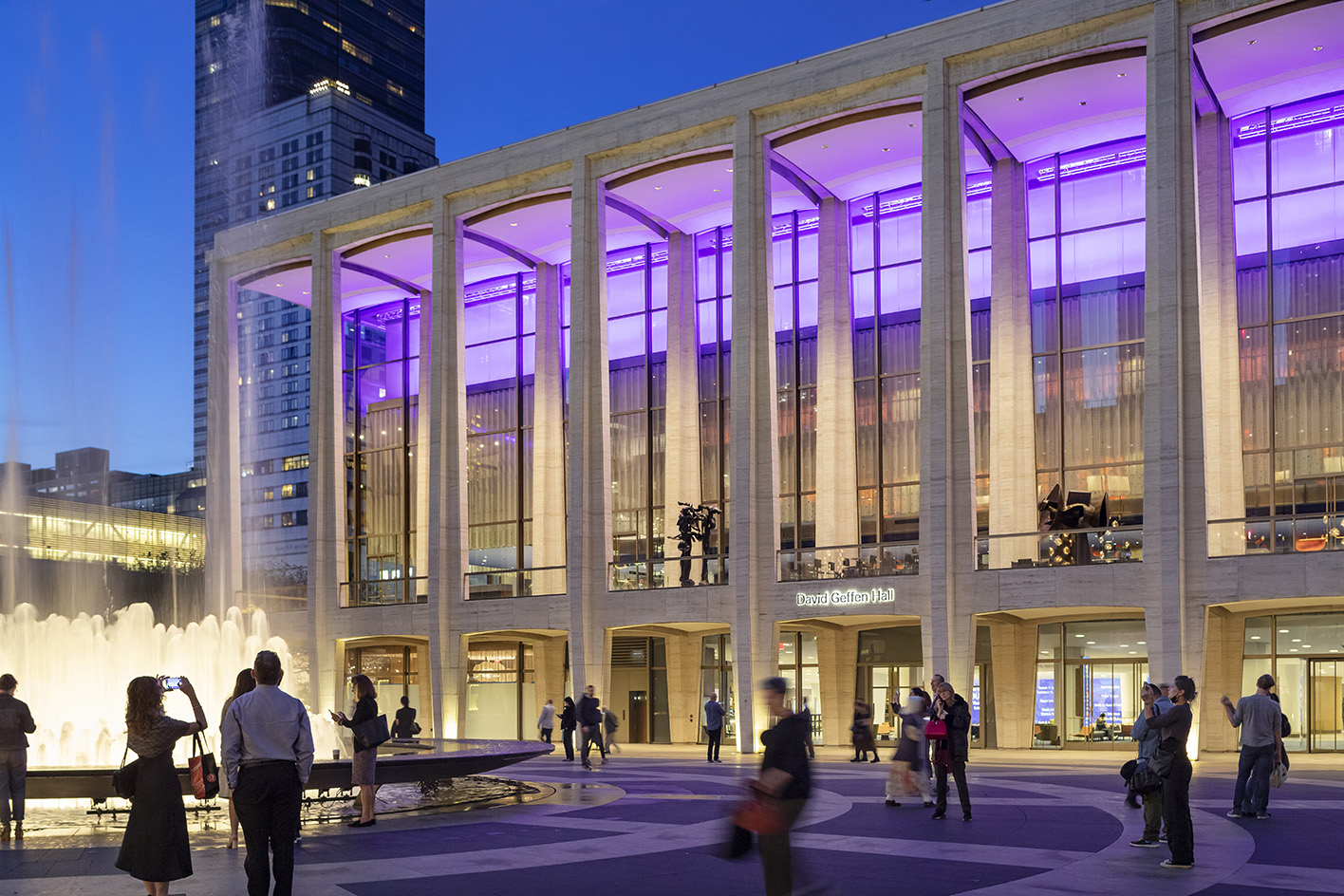‘Cultural living room’ David Geffen Hall launches in New York

Although the global pandemic left many a construction project around the world delayed in its wake, the new David Geffen Hall in New York City’s storied Lincoln Center was actually accelerated by it. Reopened this month, two years ahead of schedule and also on budget, the refurbished home of the New York Philharmonic Orchestra, which was formerly known as Avery Fisher Hall, welcomes visitors once again with renewed interiors and public spaces designed by Tod Williams Billie Tsien Architects, and a revamped theater designed by Diamond Schmitt Architects.

Conceived as a cultural living room for New York City, David Geffen Hall boasts a newly expanded footprint that includes a family lobby that has doubled in size and boasts ample seating, a bar and concessions area as well as a digital art wall, a welcome centre that goes beyond serving as a box office by also acting as a full access entry point from Broadway for the rest of Lincoln Center, a glass-fronted sidewalk studio that can be used for smaller performances, rehearsals and community events, as well as a grand promenade outside of the main Wu-Tsai Theatre itself, where a large granite bar, access points to the outdoor terrace and two promontories with additional bars provide space for congregation and people watching.
A vision of polished brass, frosted glass and rich wall coverings adorned with a motif reminiscent of falling rose petals, the warm and vibrant public spaces embody a new energy that’s palpable from both the inside and out.

‘This is our city. We wanted to capture in our design for the public spaces the glamour, beauty, energy and many voices of this amazing place,’ says Billie Tsien, founding partner with Tod Williams of Tod Williams Billie Tsien Architects. ‘Colour and emotion rules all - as Tod says, it's not beige.’
Inside of the Wu-Tsai Theatre, which has been completely revitalised, every aspect has been designed to deliver superior acoustics, thanks to state-of-the-art technology and equipment fitting of the 21st century. From optimised sightlines, relocating the stage closer to the audience, and reducing the seats by 500 to a total capacity of 2,200, the new curvilinear auditorium brings the audience closer to performers for a unified and improved experience.

‘The new Wu Tsai Theater will be transformational for the New York Philharmonic and Lincoln Center, both in the intimacy that the redesigned hall offers, as well as the high degree of artistic flexibility permitted by the variable stage configurations,’ says Gary McCluskie, principal at Diamond Schmitt.
‘The design’s surround hall approach honours the acoustic benefits of a shoebox, while embodying a new model of sound that maintains power, depth, and intimacy in equal measures. The design works in concert with the back of house and public spaces within our masterplan to bring inviting, accessible, and human-driven spaces to the people of New York and the world.’
Receive our daily digest of inspiration, escapism and design stories from around the world direct to your inbox.

In addition to built-in screens, an amplified sound system, a stage that can be configured in multiple ways thanks to 20 built-in motorised lifts that easily alter its size and location, and seats that are angled towards the stage, the theatre is enclosed in solid beechwood paneling that boasts a rhythmic rippling in places, all in service to enhancing the bass, reverberation and sound differentiation in the space.

‘We set out to accomplish two important objectives: to create a new smaller hall that will deliver much more powerful and compelling experiences for audiences and artists; and then to make the building engage with the public to a much greater degree,’ says Joshua Dachs of Fisher Dachs Associates, the theatre planning and design consultant for the project.
‘I have a long history with David Geffen Hall from my days as a young violinist on its stage right through 30 years of modifications and renovation schemes. The hall is completely transformed [and] it's been so rewarding to hear the musicians say they feel the room is embracing them now, and you feel connected from every seat. People are going to love the new seating locations that let them see the conductor and soloists as the musicians see them from close enough to read the music over their shoulders.’
INFORMATION
David Geffen Hall, 10 Lincoln Center Plaza, New York, New York
Pei-Ru Keh is a former US Editor at Wallpaper*. Born and raised in Singapore, she has been a New Yorker since 2013. Pei-Ru held various titles at Wallpaper* between 2007 and 2023. She reports on design, tech, art, architecture, fashion, beauty and lifestyle happenings in the United States, both in print and digitally. Pei-Ru took a key role in championing diversity and representation within Wallpaper's content pillars, actively seeking out stories that reflect a wide range of perspectives. She lives in Brooklyn with her husband and two children, and is currently learning how to drive.
-
 Curvilinear futurism meets subtropical beaches at Not A Hotel’s ZHA-designed Okinawa retreat
Curvilinear futurism meets subtropical beaches at Not A Hotel’s ZHA-designed Okinawa retreatZaha Hadid Architects has revealed the design for the first property in Not A Hotel’s futuristic new Vertex collection, coming soon to southern Japan
-
 Gorden Wagener leaves the helm of Mercedes-Benz design after 28 years with the company
Gorden Wagener leaves the helm of Mercedes-Benz design after 28 years with the companyThe German designer is stepping down from the role of chief design officer at Mercedes-Benz. We look back at his influence and impact on the world of automotive and luxury design
-
 These Christmas cards sent by 20th-century architects tell their own stories
These Christmas cards sent by 20th-century architects tell their own storiesHandcrafted holiday greetings reveal the personal side of architecture and design legends such as Charles and Ray Eames, Frank Lloyd Wright and Ludwig Mies van der Rohe